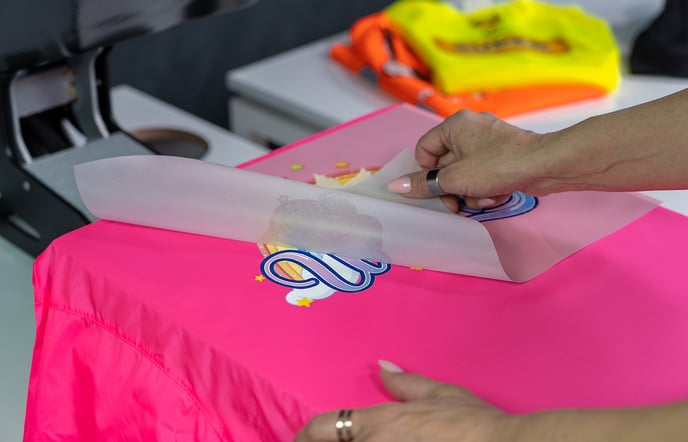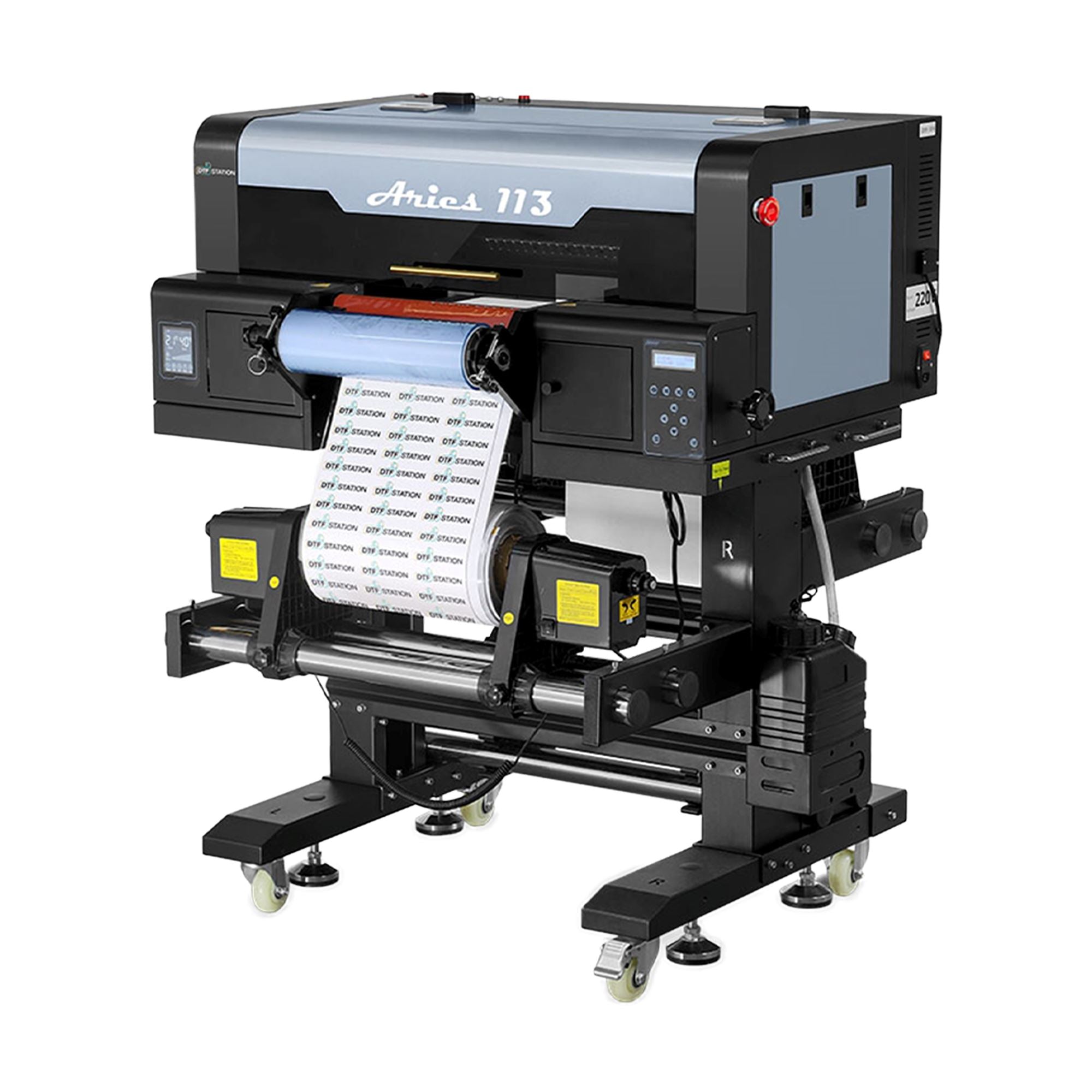DTF Printing Revolution: Unleashing Creative Thinking in Textile Design and Manufacturing
DTF Printing Revolution: Unleashing Creative Thinking in Textile Design and Manufacturing
Blog Article
The Future of Fashion: Checking Out DTF Printing Modern Technology in the Textile Market
Among these innovations, Straight to Movie (DTF) printing innovation has actually arised as an encouraging contender, supplying unique capacities and possibilities for developers and makers alike. This cutting-edge printing technique has actually sparked rate of interest due to its potential to revolutionize typical textile printing processes.
Development of Fabric Printing
Throughout background, the evolution of textile printing has actually been a testament to the innovative advancements in this intricate art type. From the ancient people making use of methods like block printing to the electronic change these days, fabric printing has constantly pressed borders. The beginnings of textile printing can be traced back to China around 220 ADVERTISEMENT, with using wood blocks to print on silk materials. As the craft spread to various other components of the world, brand-new techniques such as display printing and roller printing emerged throughout the Industrial Change, changing the textile market - DTF Printing.
In the 20th century, developments in innovation brought about the advancement of rotating display printing, permitting for faster and extra elaborate styles. The intro of electronic textile printing in the late 20th century noted a substantial shift towards even more lasting and flexible printing approaches. Today, with technologies like Direct-to-Fabric (DTF) printing technology, developers can develop lively, comprehensive prints with better performance and minimized ecological effect. The development of textile printing showcases a rich background of imagination, ingenuity, and technical progress in the world of fashion and design.
Advantages of DTF Technology
With the evolution of fabric printing strategies from ancient techniques like block printing to contemporary advancements such as digital printing, the intro of Direct-to-Fabric (DTF) innovation has actually significantly boosted the efficiency and sustainability of fabric printing procedures. One of the key advantages of DTF innovation is its ability to directly print layouts onto textile without the requirement for transfer documents, which lowers waste and simplifies the manufacturing process. Furthermore, DTF printing permits higher shade vibrancy and information accuracy contrasted to traditional methods, allowing textile producers to produce high-quality and complex styles with convenience.
Additionally, DTF technology is recognized for its versatility, as it can be made use of on various sorts of textiles, consisting of all-natural fibers like wool, cotton, and silk, in addition to artificial products such as polyester and nylon (DTF Printing). This adaptability opens up a vast array of opportunities for designers and manufacturers to experiment with different appearances and products, resulting in more unique and innovative products in the fashion business. In general, the execution of DTF technology stands for a considerable improvement in textile printing, using countless benefits that add to the future sustainability and imagination of the market
Sustainability in Style Production
Emphasizing green methods is paramount in contemporary style production, lining up with the growing customer need for lasting items. In recent years, the apparel industry has actually faced increasing examination because of its considerable ecological impact, including extreme water usage, chemical pollution, and fabric waste. As a response, lots of style brand names are now integrating lasting techniques into their production processes to minimize harm to the setting.
Sustainability in style manufacturing incorporates different facets, such as making use of natural and recycled materials, reducing power intake, carrying out moral labor techniques, and advertising transparency throughout the supply chain. Additionally, improvements in modern technology, like DTF printing, offer chances to additionally improve sustainability in textile production. This modern technology allows accurate printing on fabrics, minimizing ink waste and water use contrasted to standard printing approaches.
Design Liberty and Personalization

Additionally, DTF printing promotes modification on a range formerly unattainable, enabling customized clothes and special items customized to specific choices. Consumers can currently actively join the style process, developing garments that reflect their design and character. This modification not just improves the customer experience however likewise advertises a feeling of exclusivity and individuality in a market saturated with mass-produced garments. Overall, DTF printing innovation transforms the style landscape in the fabric sector, offering limitless opportunities for imaginative expression and tailored style.
Impact on Supply Chain & Market Trends
DTF printing modern technology in the fabric sector is improving supply chain dynamics and affecting market fads through its performance and personalization capabilities. By making it possible for on-demand printing and getting rid of the requirement for huge inventories, DTF technology streamlines the supply chain process. Makers can produce things as needed, lowering waste and storage space visit this site right here costs. This just-in-time view publisher site production model additionally allows for quicker action to market demands and trends, resulting in an extra agile and responsive supply chain.
Additionally, the customization potential of DTF printing modern technology is transforming the market fads in the textile sector. Customers increasingly look for customized and unique items, and DTF permits brands to offer custom designs cost-effectively. This modification capacity not only improves customer complete satisfaction yet additionally opens brand-new chances for companies to satisfy niche markets and separate themselves from competitors. Therefore, DTF technology is driving a change towards even more customer-centric and cutting-edge approaches within the fabric sector, shaping the future of fashion.

Verdict
In verdict, DTF printing innovation is revolutionizing the textile sector by providing numerous advantages such as design sustainability, modification, and liberty. This cutting-edge technology is reshaping the future of fashion manufacturing, impacting supply chains, and driving market fads in the direction of extra eco-friendly and efficient methods. As the market proceeds to develop, DTF printing will play a vital duty fit the means fabrics are created and eaten in the years to come.
From the old people using strategies like block printing to the electronic change of today, textile printing has actually constantly pushed borders. As the craft spread to other parts of the world, new approaches such as display printing and roller printing emerged during the Industrial Change, revolutionizing the textile industry.
The introduction of digital fabric printing in the late 20th century noted a substantial shift towards even more sustainable and functional printing approaches.With the advancement of fabric printing strategies from ancient techniques like block printing to contemporary technologies such as digital printing, the introduction of Direct-to-Fabric (DTF) official site technology has substantially improved the efficiency and sustainability of fabric printing processes (DTF Printing).In action to the necessary shift towards sustainability in fashion production, the fostering of ingenious technologies like DTF printing not just addresses ecological worries however additionally opens up opportunities for unmatched style liberty and personalization in the fabric industry
Report this page